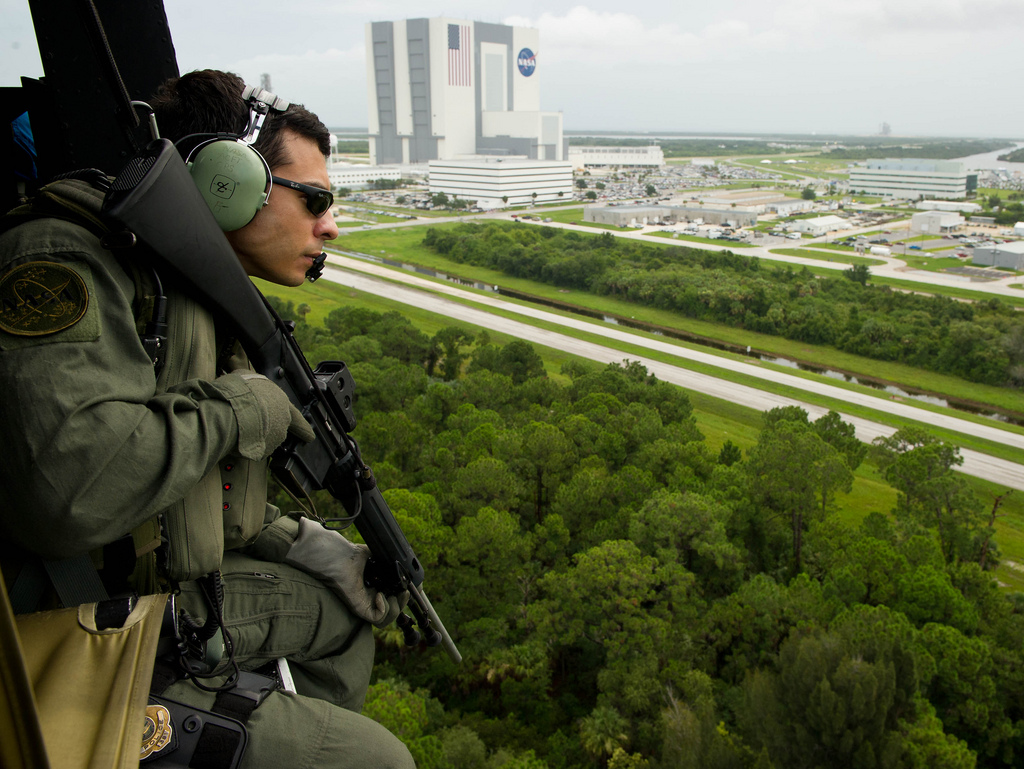
Warren Hinson, a NASA Emergency Response Team (ERT) member, keeps an eye out while flying near the Vehicle Assembly Building (VAB) prior to the launch of space shuttle Atlantis, STS-135, Friday, July 8, 2011, at Kennedy Space Center in Cape Canaveral, Fla. The launch of Atlantis, is the final flight of the shuttle program, a 12-day mission to the International Space Station. Photo Credit: (NASA/Bill Ingalls)
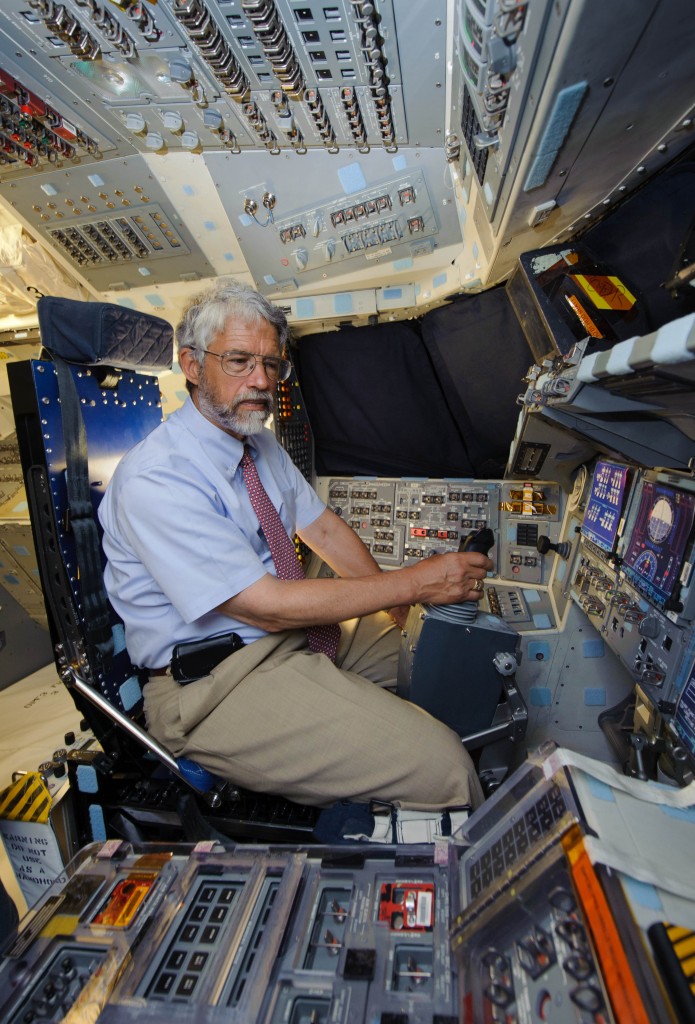
Dr. John Holdren, Director of the White House Office of Science and Technology Policy, and Co-Chair of the Presidentâs Council of Advisors on Science and Technology, sits in the commander's chair aboard space shuttle Discovery at the Orbiter Processing Facility at NASA's Kennedy Space Center, Friday, July 8, 2011, in Cape Canaveral, Fla. Holdren was given a tour Discovery, which is in the process of decomissioning, following the launch of Atlantis (STS-135) Friday. Photo Credit: (NASA/Paul E. Alers)
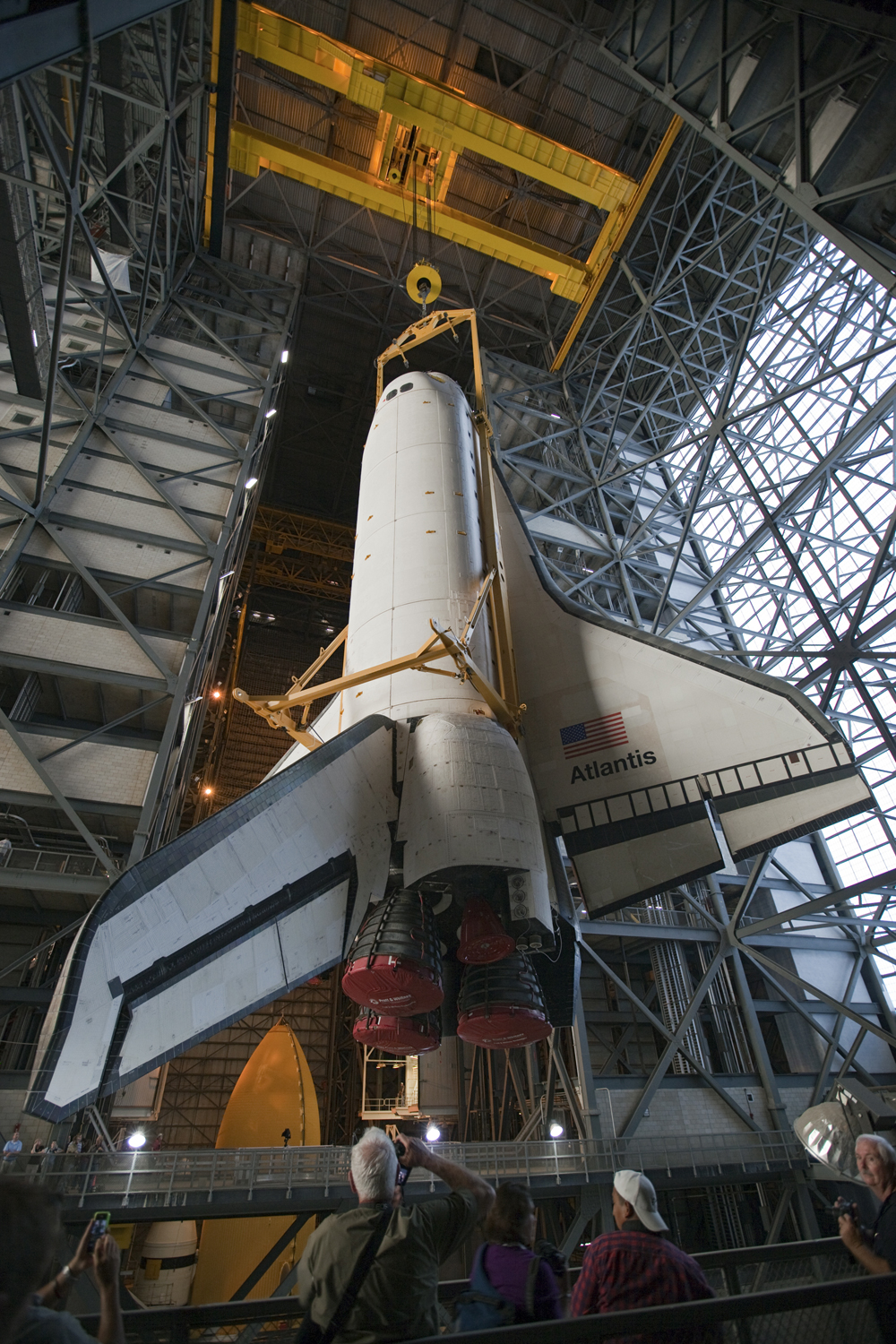
CAPE CANAVERAL, Fla. -- In the Vehicle Assembly Building at NASA's Kennedy Space Center in Florida, shuttle Atlantis is lifted by an overhead crane and moved into a high bay where it will be attached to its external fuel tank and solid rocket boosters which are already on the mobile launcher platform.
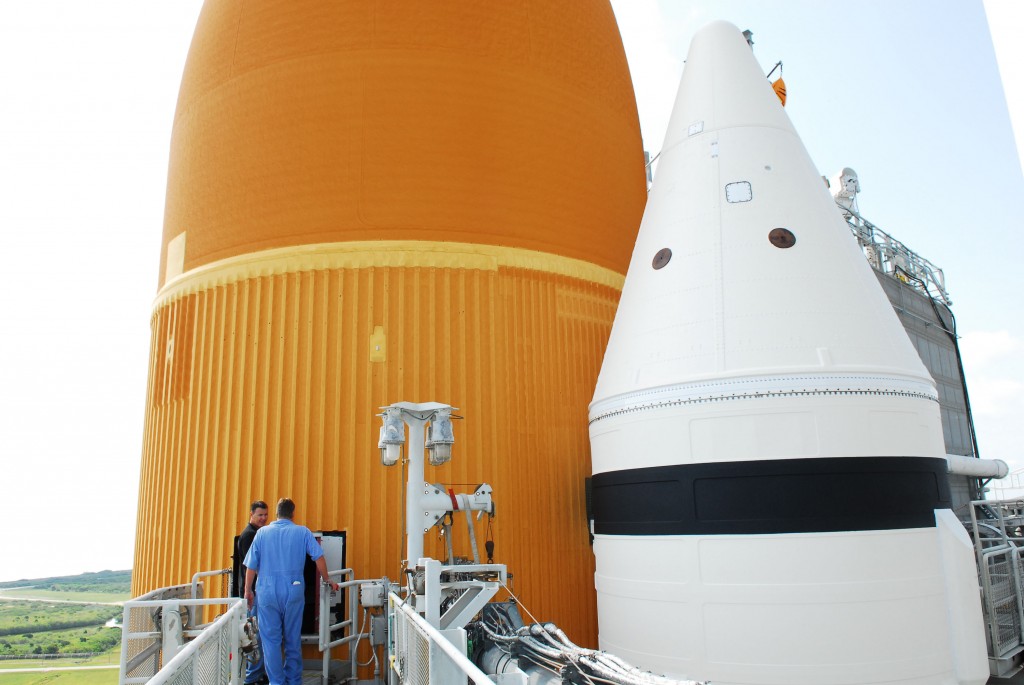
CAPE CANAVERAL, Fla. -- At NASA's Kennedy Space Center in Florida, technicians prepare to conduct Computed Radiography (CR) X-ray scans of 50 support beams, called stringers, on the shuttle-facing side of Atlantis' external tank at Launch Pad 39A. The hi-tech images will be taken of the tops and bottoms of the 21-foot long beams, which are located on the tank's intertank section. The scans follow a June 15th tanking test when the launch team filled then drained the tank of about 535,000 gallons of liquid hydrogen and liquid oxygen, just like for a launch. Earlier this year, managers directed teams to make the same stringer modifications to Atlantis' tank, ET-138, as they had after small cracks in the support beams of shuttle Discovery's STS-133 mission external tank were discovered. The scans will confirm there are no issues with Atlantis' tank.
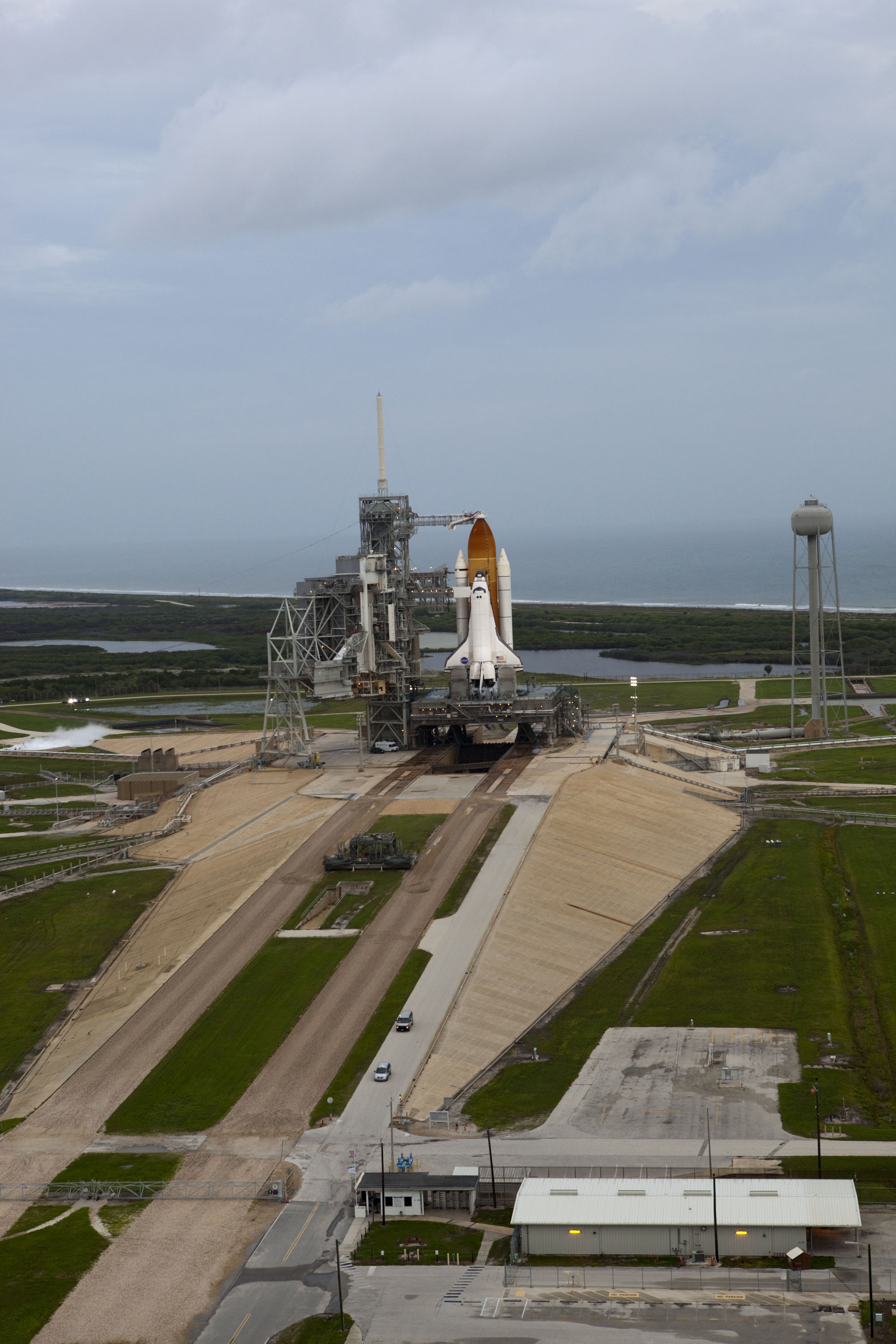
CAPE CANAVERAL, Fla. -- Space shuttle Atlantis, attached to its bright-orange external fuel tank and twin solid rocket boosters, takes center stage on its seaside launch pad at NASA's Kennedy Space Center in Florida in this aerial image taken from a NASA helicopter. Atlantis and its crew of four -- Commander Chris Ferguson, Pilot Doug Hurley and Mission Specialists Sandy Magnus and Rex Walheim -- are scheduled to lift off at 11:26 a.m. EDT on July 8 to deliver the Raffaello multi-purpose logistics module packed with supplies and spare parts to the International Space Station. Atlantis also will fly the Robotic Refueling Mission experiment that will investigate the potential for robotically refueling existing satellites in orbit. In addition, Atlantis will return with a failed ammonia pump module to help NASA better understand the failure mechanism and improve pump designs for future systems. STS-135 will be the 33rd flight of Atlantis, the 37th shuttle mission to the space station, and the 135th and final mission.
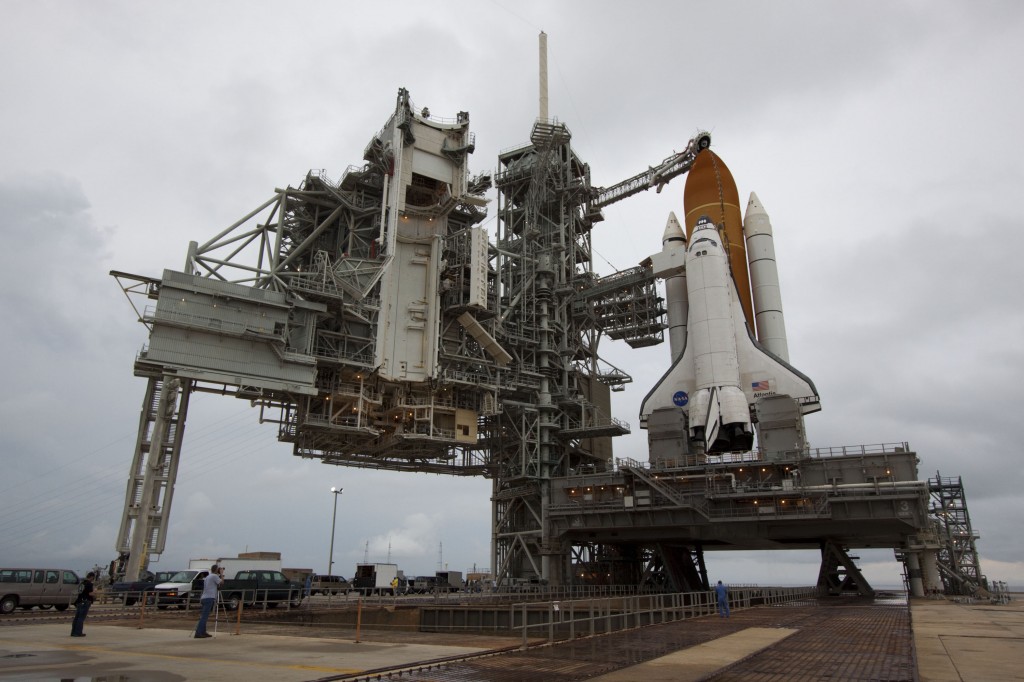
CAPE CANAVERAL, Fla. -- Employees check out space shuttle Atlantis after it was uncovered on Launch Pad 39A at NASA's Kennedy Space Center in Florida following the move of the rotating service structure (RSS). The structure provides weather protection and access to the shuttle while it awaits liftoff on the pad. RSS "rollback" marks a major milestone in Atlantis' STS-135 mission countdown.
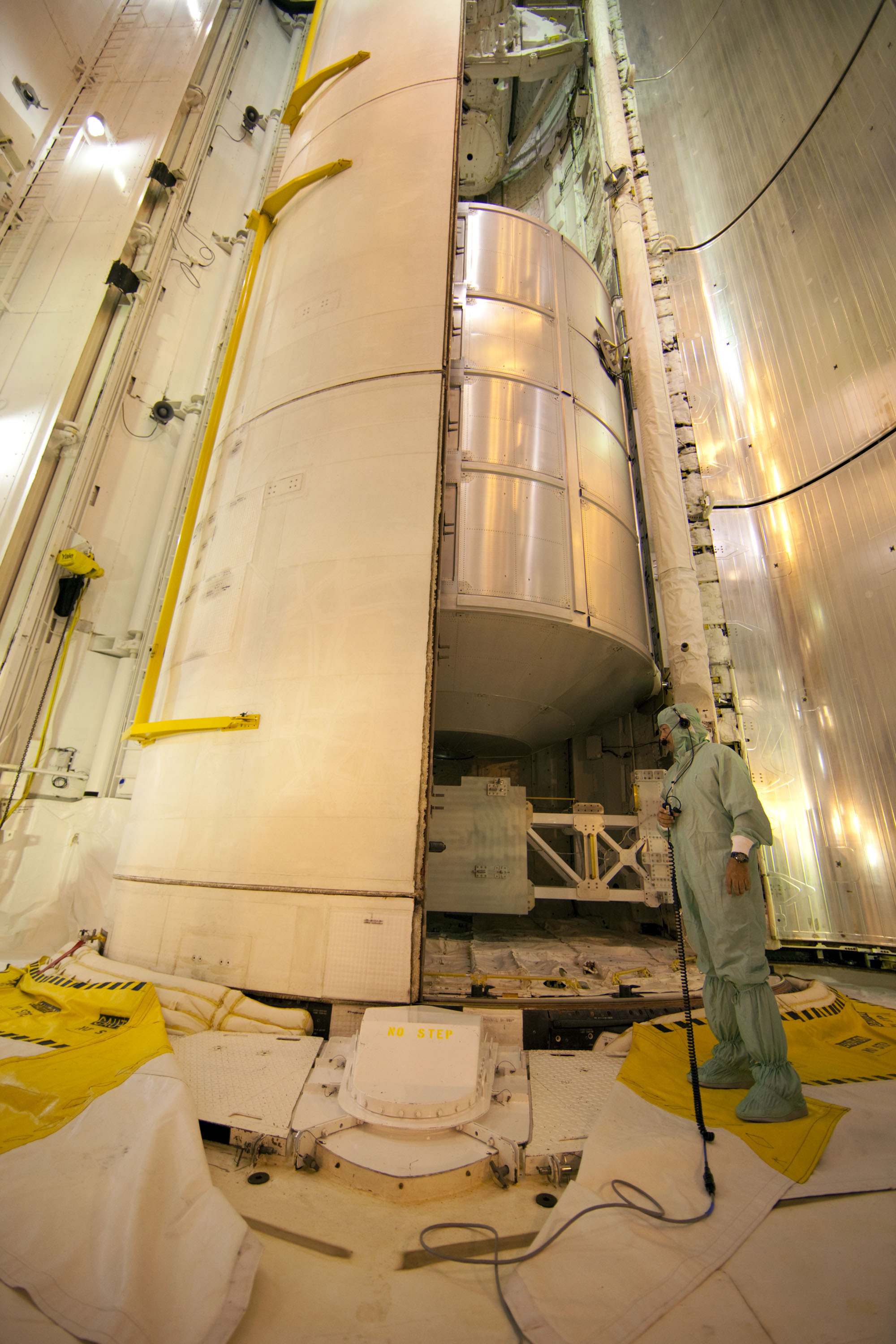
CAPE CANAVERAL, Fla. -- At Launch Pad 39A at NASA's Kennedy Space Center in Florida, technicians monitor the progress as space shuttle Atlantis' payload bay doors close around the Raffaello multi-purpose logistics module (MPLM) payload for Atlantis' STS-135 mission to the International Space Station.
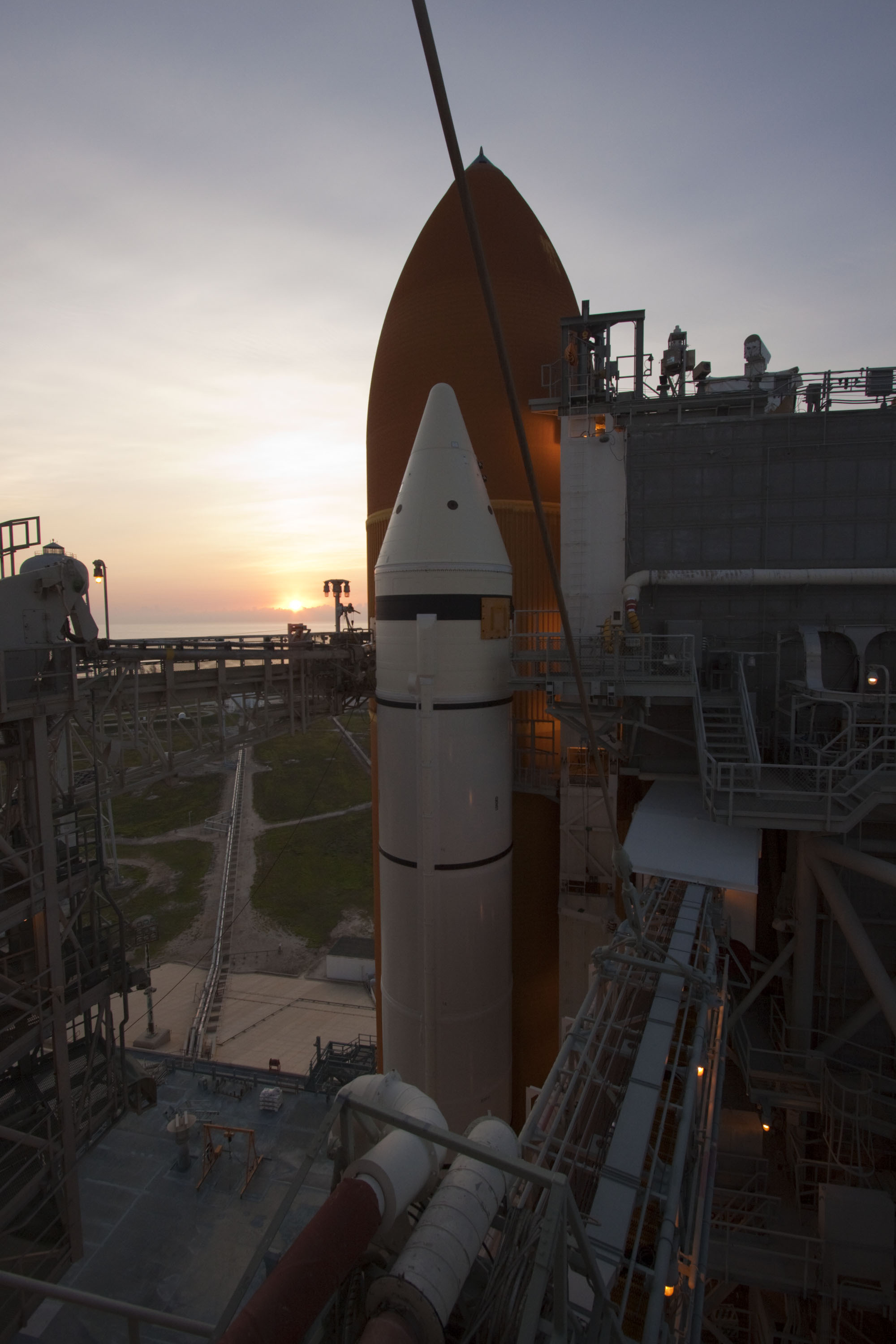
CAPE CANAVERAL, Fla. -- The sun rises over the Atlantic Ocean silhouetting space shuttle Atlantis' external fuel tank and solid rocket boosters on Launch Pad 39A at NASA's Kennedy Space Center in Florida. The STS-135 crew members will be at the pad to participate in a launch countdown simulation exercise. As part of the Terminal Countdown Demonstration Test (TCDT), the crew members are strapped into their seats on Atlantis to practice the steps that will be taken on launch day. Shuttle Atlantis and its crew are targeted to lift off July 8, taking with them the Raffaello multi-purpose logistics module packed with supplies and spare parts to the International Space Station. The STS-135 mission also will fly a system to investigate the potential for robotically refueling existing satellites and return a failed ammonia pump module to help NASA better understand the failure mechanism and improve pump designs for future systems.
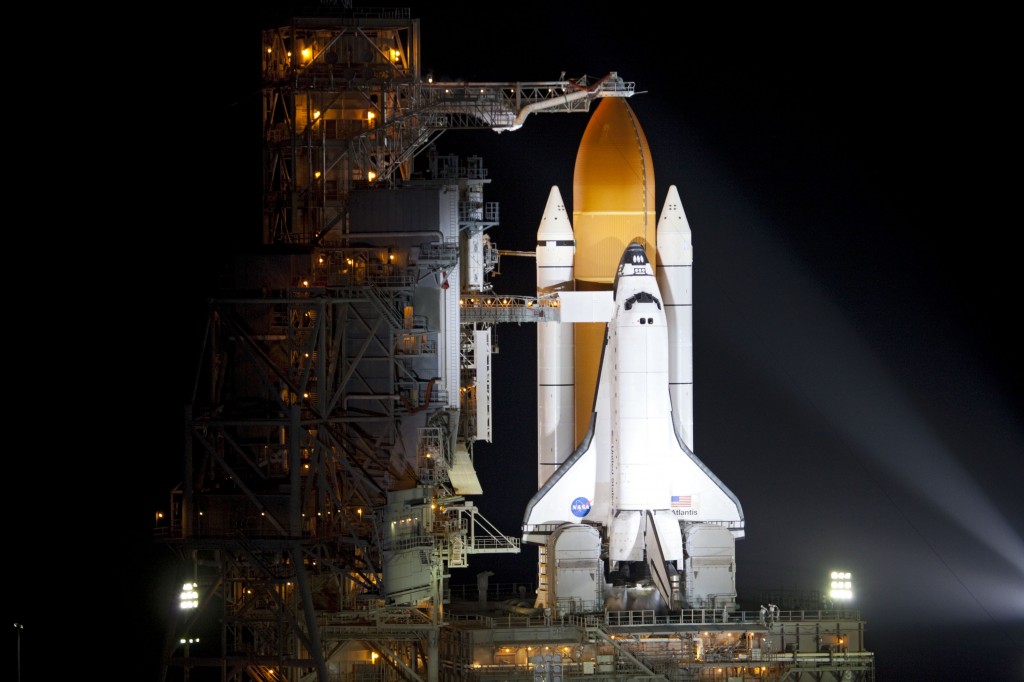
CAPE CANAVERAL, Fla. -- Space shuttle Atlantis, attached to its bright-orange external fuel tank and twin solid rocket boosters, is bathed in xenon lights and takes center stage on Launch Pad 39A at NASA's Kennedy Space Center in Florida in this aerial image taken from a NASA helicopter.
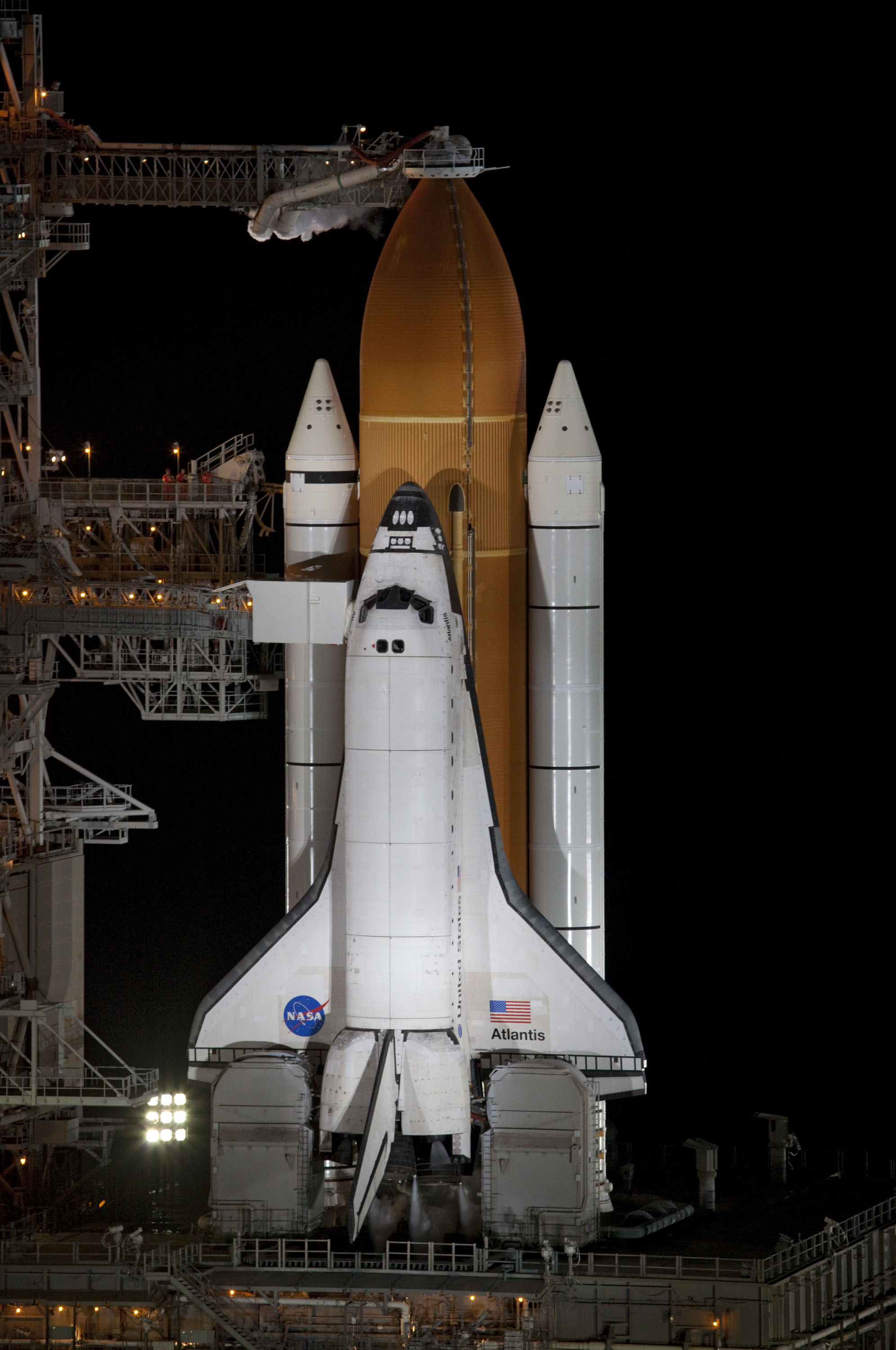
CAPE CANAVERAL, Fla. -- Space shuttle Atlantis, attached to its bright-orange external fuel tank and twin solid rocket boosters, is bathed in xenon lights and takes center stage on Launch Pad 39A at NASA's Kennedy Space Center in Florida in this aerial image taken from a NASA helicopter.

Space shuttle Atlantis is seen as it launches from pad 39A on Friday, July 8, 2011, at NASA's Kennedy Space Center in Cape Canaveral, Fla. The launch of Atlantis, STS-135, is the final flight of the shuttle program, a 12-day mission to the International Space Station. Photo Credit: (NASA/Bill Ingalls)
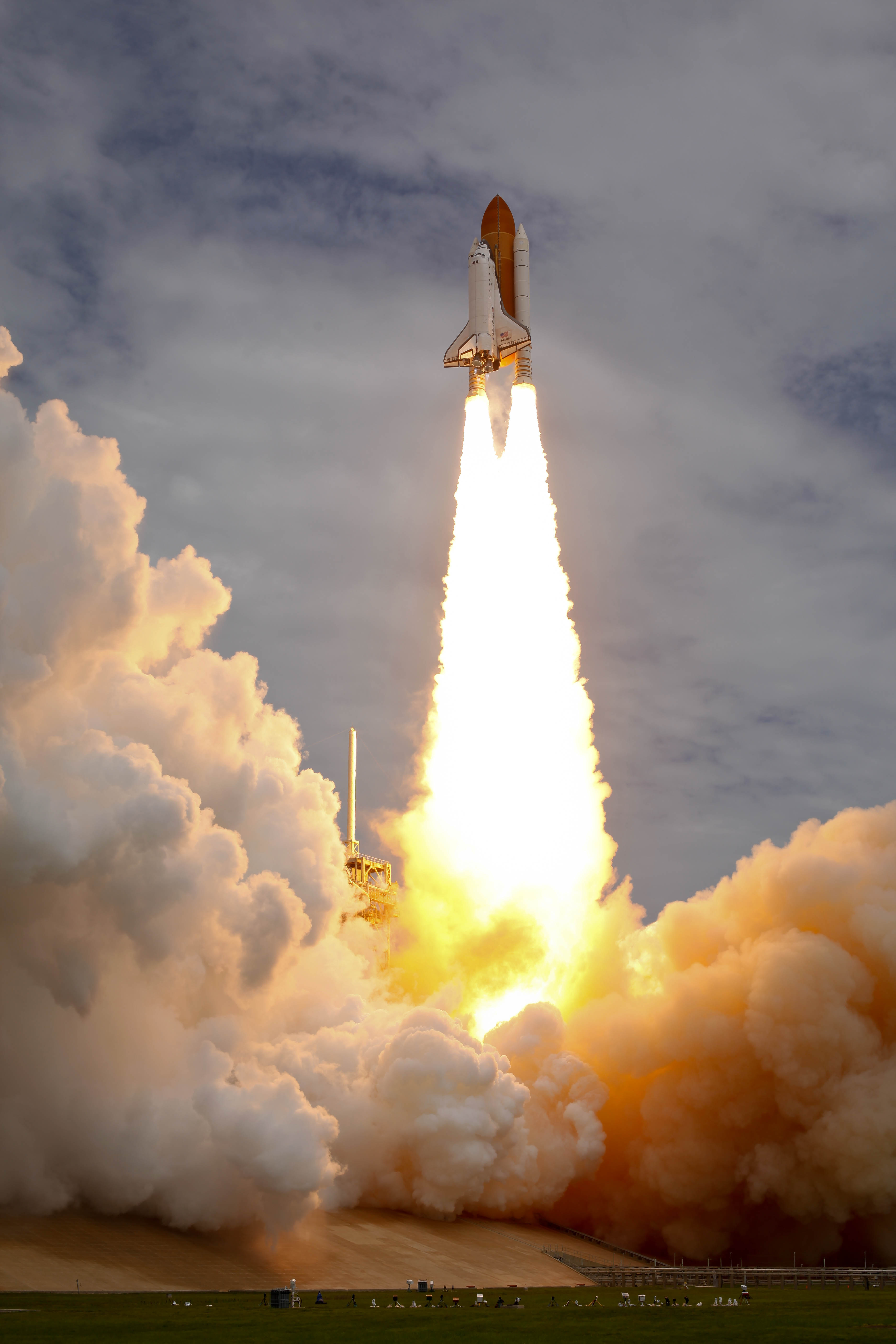
Space shuttle Atlantis is seen as it launches from pad 39A on Friday, July 8, 2011, at NASA's Kennedy Space Center in Cape Canaveral, Fla. The launch of Atlantis, STS-135, is the final flight of the shuttle program, a 12-day mission to the International Space Station. Photo Credit: (NASA/Bill Ingalls)
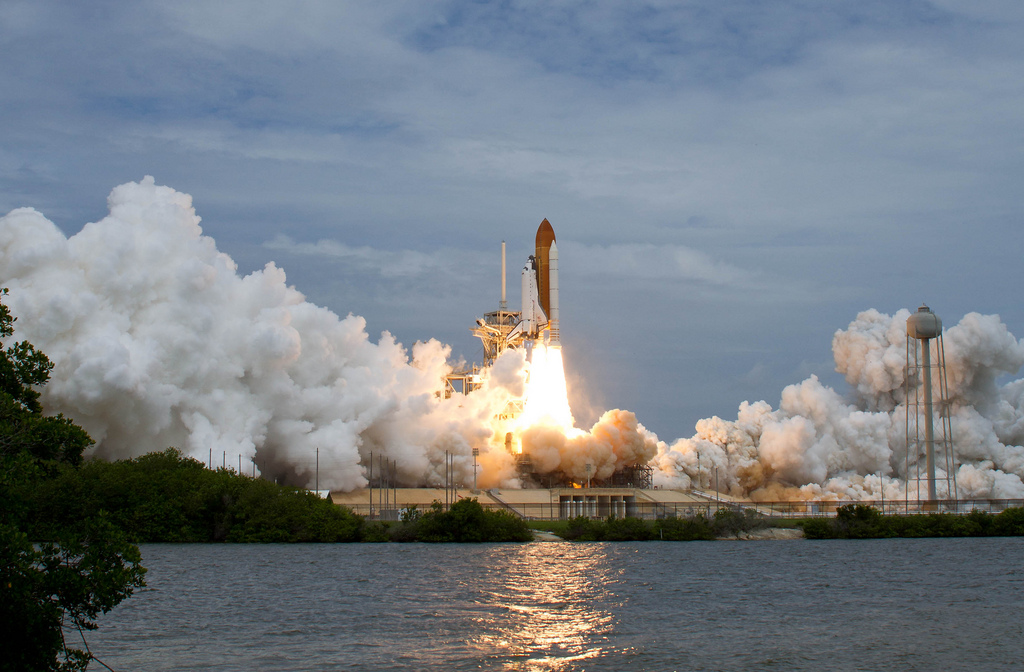
Space shuttle Atlantis is seen as it launches from pad 39A on Friday, July 8, 2011, at NASA's Kennedy Space Center in Cape Canaveral, Fla. The launch of Atlantis, STS-135, is the final flight of the shuttle program, a 12-day mission to the International Space Station. Photo Credit: (NASA/Bill Ingalls)
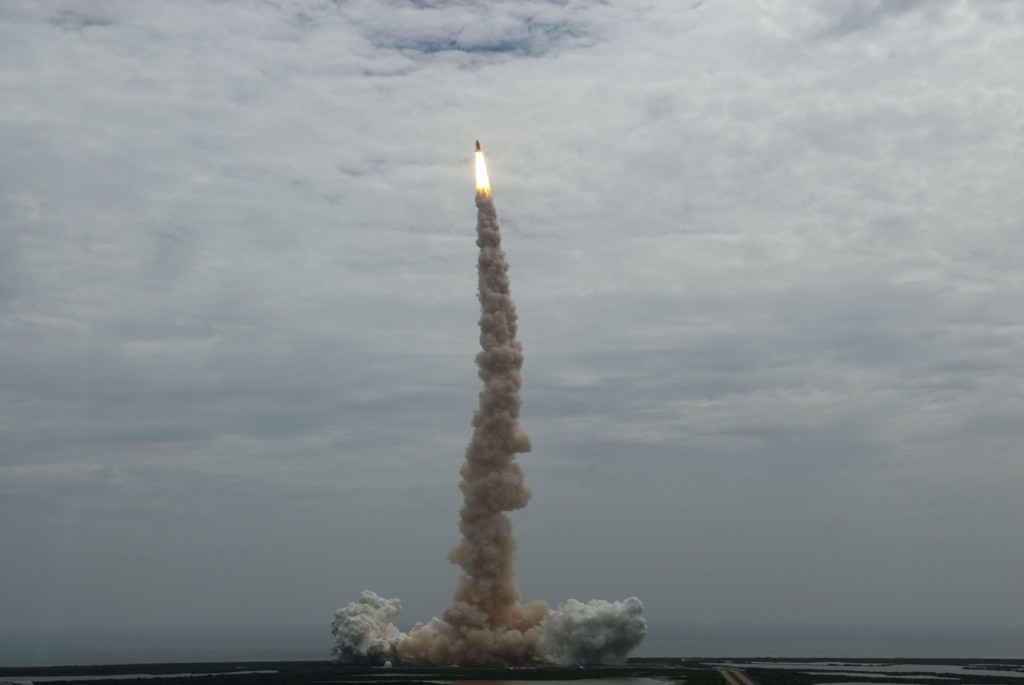
CAPE CANAVERAL, Fla. -- Seen from the roof of the Vehicle Assembly Building, space shuttle Atlantis thunders off Launch Pad 39A at NASA's Kennedy Space Center in Florida. Atlantis began its final flight, the STS-135 mission to the International Space Station, at 11:29 a.m. EDT on July 8. STS-135 will deliver the Raffaello multi-purpose logistics module packed with supplies and spare parts for the International Space Station.

Space shuttle Atlantis is seen through the window of a Shuttle Training Aircraft (STA) as it launches from launch pad 39A at Kennedy Space Center on the STS-135 mission, Friday, July 8, 2011 in Cape Canaveral, Fla. Atlantis launched on the final flight of the shuttle program on a 12-day mission to the International Space Station. The STS-135 crew will deliver the Raffaello multipurpose logistics module containing supplies and spare parts for the space station. Photo Credit: (NASA/Dick Clark)

The exhaust plume from space shuttle Atlantis is seen through the window of a Shuttle Training Aircraft (STA) as it launches from launch pad 39A at the Kennedy Space Center on the STS-135 mission, Friday, July 8, 2011 in Cape Canaveral, Fla. Atlantis launched on the final flight of the shuttle program on a 12-day mission to the International Space Station. The STS-135 crew will deliver the Raffaello multipurpose logistics module containing supplies and spare parts for the space station. Photo Credit: (NASA/Dick Clark)
